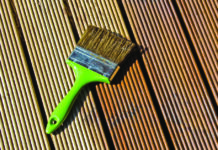“What is the best way to sand and prepare wood?” is a query that we often get. We thought it’d help our customers to take an in-depth look at abrasives and which sanding products are best to use.
About abrasives – Know your sanding products
An abrasive is a material, often a mineral, that’s used to shape or finish a piece of wood through rubbing part of the surface away. It’s what you do before the finishing process, which usually involves polishing it to achieve a smooth, reflective surface or even roughening it to get a satin, matt or beaded finish.
Abrasives are extremely commonplace and are used in a wide variety of industrial, domestic and technological applications. This means there’s a wide variety of physical and chemical abrasives available, in all manner of compositions, shapes and sizes. They can be used for:
- Grinding
- Polishing
- Buffing
- Honing
- Cutting
- Drilling
- Sharpening
- Lapping
- Sanding
For simplicity’s sake, we use the word ‘mineral’ to cover both actual minerals and mineral-like substances, man-made and natural.
What is a coated abrasive?
A coated abrasive is an abrasive grain bonded to a flexible base like paper, cloth, vulcanised fibre or plastic film. Sand paper is an excellent example. Such abrasives come in various grit sizes, ranging from a very coarse 2mm grain to ultra fine grains of less than a millimetre in diameter. As you can imagine some abrasives are better for certain jobs than others, some are designed for working by hand and others specifically for use with machines like an orbital sander, belt sander or drum sander.
Which abrasive to choose?
Obviously it’s important to choose the right abrasive for the job in hand, which means picking the right type of abrasive grain and the correct grit size. It helps enormously to know what’s in abrasives, because they’re all made differently.
There are four types of abrasive grains commonly used in the wood flooring industry:
- Aluminium Oxide or Ali oxide (alox)
- Silicon Carbide (Sic)
- Zircronium Dioxide or Zirconia (Zirc)
- Ceramic grain
About aluminium oxide sandpaper – This is a sharp, blocky mineral, the most common all-purpose woodworking abrasive for a very good reason. It is the only abrasive mineral that fragments under the heat and pressure generated by sanding wood. This characteristic is called friability and it’s highly desirable. As you sand, aluminum oxide renews its cutting edges constantly, staying sharp and cutting much longer than other minerals.
Aluminium oxide is also a relatively tough abrasive, which means its edges don’t dull much before they fragment. Its excellent friability and toughness make it the longest lasting and the most economical abrasive mineral.
Silicon Carbide sanding – With silicon carbide abrasives, the grain macro-fractures. This means it breaks into smaller pieces which act to re-sharpen it before it goes dull. Silicon carbide abrasives stay sharp until they die, but they die relatively quickly. This makes it the least expensive option for belt sanders.
There is only one kind of silicon carbide and it’s harder and sharper than most aluminium oxides, making it the best choice for cutting hard materials like wood finishes, paint, plastic and metal. It’s also a friable mineral, so hard that sanding soft wood won’t make it fragment and renew its cutting edges. Though it will sand faster at first, it will dull more quickly than aluminium oxide. It is also generally more expensive than aluminium oxide and is perfect for sanding ceramic finishes off wood floors.
Zircronium Dioxide sand paper products – Zirconia alumina is an alloy – a mixture – of zircon and aluminum oxide. Grey in colour, it has a very long life and a fast cut rate even under heavy grinding stress. As the grain breaks down under heat and pressure, it fractures into smaller jagged pieces. Zirc, as the experts call it, is good at dissipating heat, letting the grain stay sharp for longer than most other man made and naturally mined grains.
Its impressive durability makes it particularly effective on difficult to grind and exotic metals and it doesn’t fragment as much on wood as it does on metals, making it a fast solution with a long life, great for sanding wood, particularly the coarser grits.
Sanding with ceramic grain – With ceramic grain abrasives, the grain micro-fractures and breaks down into smaller razor-like pieces many more times before it dulls. Ceramics come in a wide variety of shapes, from blocks and heavy wedges to flake-like shards. They are invariably more costly and less common than other abrasive minerals as well as very tough and highly aggressive.
The cost of ceramic sanding belts is usually around 50% higher than most silicon carbide belts, it delivers two to four times the performance. The performance depends on the ratio of ceramic grain used, so be sure to ask your distributor or manufacturer to confirm exactly what each product contains. 100% and 15% ceramic grain abrasives are very different.
Which is the most cost-effective abrasive for the job?
When choosing the perfect abrasive, it’s important to separate the price and the cost. The price per belt will be higher for ceramic abrasives but the total cost of the job – the product plus the time/labour – will be significantly lower.
Choosing the right sandpaper grades
The final piece of the puzzle is grit selection. There’s a very common misconception to avoid when dealing with aluminium oxide sandpaper: you don’t need to start with the roughest grit you can find. Believe it or not, just because an abrasive feels more aggressive it doesn’t mean it really is.
When you’re trying to abrade very hard materials, it’s best to take the opposite approach. Think of it like a block of ice. Can you smash it with a mallet? More often than not, all you do is bounce the mallet off the ice, which remains undamaged. But if you chisel away at the ice with an ice pick, you penetrate it with ease.
When sanding with aluminium oxide, the same principle applies. Rather than start with the most aggressive grit, start with something less brutal and more fine, for example an 80 grit. You’ll find that the finer sanding belt will break up the finish much more effectively, after which you’ll be able to move on to a rougher grit to get the finish nice and flat.
Mystery solved! It’s one of those essential facts that mean you no longer have to sweat over re-sanding pre-finished wood, whether it’s beautiful wood flooring, a piece of furniture or something else altogether. Good luck!
Abrasives FAQ – Quick answers to popular wood sanding questions
Here are some rapid-fire answers to common floor sanding and other sanding questions. If you’re still lost in space and would really appreciate some expert advice, that’s no problem at all. Feel free to call us or send us an email.
Q: How to sand floorboards?
A: We’re often asked how to sand wood floors in general, and how to sand hardwood floors in particular. We’ve already published useful guides covering the question:
You might need to be fairly aggressive at first if the boards are in poor condition, then work your way down through the grits from coarse to medium to smooth, using a grit of 120 with a 150 maximum.
Q: How to sand wood?
A: Always sand with the grain of the wood rather than against it. Sand several times if the timber is rough, working through the grit grades to a smooth finish. A 120 or 150 grit final sand is usually perfect for most wood finishes.
Q: How to prepare wood for painting?
A: If the paint is water-based, which many are, the wood must be free of waxes or oils. You can get rid of them by either scrubbing the surface with white spirit or sanding it. Use a primer, which helps to give better protection as well as providing a good base coat for the paint to bond with.
Q: What is the best sandpaper for wood?
A: All the sandpaper types we’ve talked about will work well. The different types of sandpaper are more about durability and cutting ability, so it really depends on the wood type, its condition and whether or not you’re trying to remove an existing coating or wood finish. If you’re stuck, give us a call.
Q: How to finish wood?
A: It depends on the particular look you want to achieve and the purpose of the wood, whether it’s a floor or wall, internal or external wood, a piece of furniture, decking or a shed. There are literally hundreds of wood finishing products on the market, everything from traditional to contemporary finishes, including waxes, oils, polishes, sealers and varnishes. We’ve organised our sanding abrasives logically to make your choice easier.





Hello,
I have just taken up woodturning, and need to buy a range of grits of sandpaper. I have looked extensively on the Internet but to date cannot find a supplier of a comprehensive range of grits of sandpaper. Can you please recommend a supplier. The grits needed are 40g, 60g, 120g, 240g, 320g, 400g, 600g, and finer if available.
Regards,
Trevor.
Hello Trevor,
We have an extensive range of Sanding Abrasives available on our website that may be of use to you.
Kind Regards Samantha.